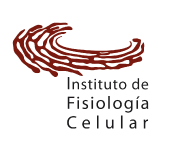Saturation mutagenesis of the transmembrane region of hokc in escherichia coli reveals its high tolerance to mutations
Lara Ortiz, M. T., Martinell García, V., & Del Rio, G. (2021). Saturation Mutagenesis of the Transmembrane Region of HokC in Escherichia coli Reveals Its High Tolerance to Mutations. International Journal of Molecular Sciences, 22(19), 10359. https://doi.org/10.3390/ijms221910359
Cells adapt to different stress conditions, such as the antibiotics presence. This adaptation sometimes is achieved by changing relevant protein positions, of which the mutability is limited by structural constrains. Understanding the basis of these constrains represent an important challenge for both basic science and potential biotechnological applications. To study these constraints, we performed a systematic saturation mutagenesis of the transmembrane region of HokC, a toxin used by Escherichia coli to control its own population, and observed that 92% of single-point mutations are tolerated and that all the non-tolerated mutations have compensatory mutations that reverse their effect. We provide experimental evidence that HokC accumulates multiple compensatory mutations that are found as correlated mutations in the HokC family multiple sequence alignment. In agreement with these observations, transmembrane proteins show higher probability to present correlated mutations and are less densely packed locally than globular proteins; previous mutagenesis results on transmembrane proteins further support our observations on the high tolerability to mutations of transmembrane regions of proteins. Thus, our experimental results reveal the HokC transmembrane region high tolerance to loss-of-function mutations that is associated with low sequence conservation and high rate of correlated mutations in the HokC family sequences alignment, which are features shared with other transmembrane proteins.




